#ceremonial cacao powder
Explore tagged Tumblr posts
Text
Exploring the Rich Tradition of Organic Ceremonial Cacao: An Ancient Elixir for Modern Wellness
In the realm of holistic wellness and spiritual practices, the ceremonial use of cacao has experienced a resurgence in popularity, captivating the hearts and minds of individuals seeking connection, healing, and transformation. At the heart of this ancient tradition lies organic ceremonial cacao, a sacred elixir revered for its profound effects on the mind, body, and spirit. Let's embark on a journey to discover the rich history, therapeutic benefits, and modern applications of Organic Ceremonial Cacao.
Organic ceremonial cacao, derived from the seeds of the Theobroma cacao tree, has been used for centuries by indigenous cultures in Mesoamerica for ceremonial and medicinal purposes. Known as "the food of the gods" by the ancient Mayans and Aztecs, cacao was revered for its powerful healing properties and spiritual significance. In ceremonial settings, cacao was consumed as a sacred beverage during rituals, celebrations, and rites of passage, serving as a conduit for connection with the divine and the natural world.
Today, the tradition of ceremonial cacao continues to thrive, with a renewed focus on sustainability, ethical sourcing, and organic cultivation practices. Organic ceremonial cacao is cultivated without the use of synthetic pesticides, fertilizers, or chemicals, ensuring purity and potency in every batch. By prioritizing organic farming methods, producers uphold the principles of environmental stewardship, biodiversity conservation, and fair trade, honoring the sacred lineage of cacao while supporting the livelihoods of farmers and communities.
One of the key distinctions of organic ceremonial cacao is its preparation and consumption in a ceremonial context. Unlike commercial chocolate products, which are often laden with sugar, additives, and preservatives, ceremonial cacao is prepared with reverence and intention, honoring the spirit of the plant and the wisdom of ancient traditions. The process typically involves grinding whole cacao beans into a fine powder, blending it with hot water or plant-based milk, and infusing it with sacred herbs, spices, or sweeteners to enhance its flavor and potency.
The therapeutic benefits of organic ceremonial cacao are manifold, encompassing physical, emotional, and spiritual dimensions of well-being. Rich in antioxidants, vitamins, and minerals, cacao nourishes the body and supports cardiovascular health, immune function, and cognitive function. Its natural mood-enhancing properties promote feelings of relaxation, euphoria, and inner peace, making it an ideal ally for stress relief, anxiety reduction, and emotional healing.
Moreover, organic ceremonial cacao is revered for its ability to deepen spiritual practices and facilitate inner exploration. When consumed with intention and mindfulness, cacao can induce altered states of consciousness, heighten sensory perception, and unlock creative inspiration. In ceremonial settings, cacao serves as a catalyst for self-discovery, introspection, and heart-centered connection, fostering a sense of unity and communion with oneself, others, and the universe.
In the modern wellness landscape, organic ceremonial cacao has found a variety of applications beyond traditional ceremonies. From yoga and meditation retreats to ecstatic dance gatherings and conscious community events, cacao is increasingly being integrated into holistic practices and transformational experiences. Its gentle yet profound effects make it a versatile tool for enhancing mindfulness, cultivating presence, and fostering deeper connections in group settings.
Furthermore, organic ceremonial cacao has gained popularity as an alternative to alcohol and other recreational substances in social settings. Cacao ceremonies offer a safe and sacred space for individuals to come together in celebration, friendship, and shared experience, free from the negative effects of intoxication. As awareness grows around the benefits of plant medicine and natural remedies, cacao emerges as a potent ally for conscious socializing and collective healing.
In conclusion, organic ceremonial cacao represents a convergence of ancient wisdom and modern wellness, offering a holistic approach to healing, transformation, and connection. From its sacred origins in indigenous cultures to its resurgence in contemporary spiritual practices, cacao continues to inspire reverence and awe as a sacred elixir for the mind, body, and spirit. As we honor the sacred lineage of cacao and embrace its gifts with gratitude and respect, we invite deeper levels of healing, awakening, and communion into our lives and communities.
For more details, visit us:
Ceremonial Cacao Australia Wholesale
Best Ceremonial Cacao Bundle Australia
sacred ceremonial cacao
1 note
·
View note
Text
0 notes
Text
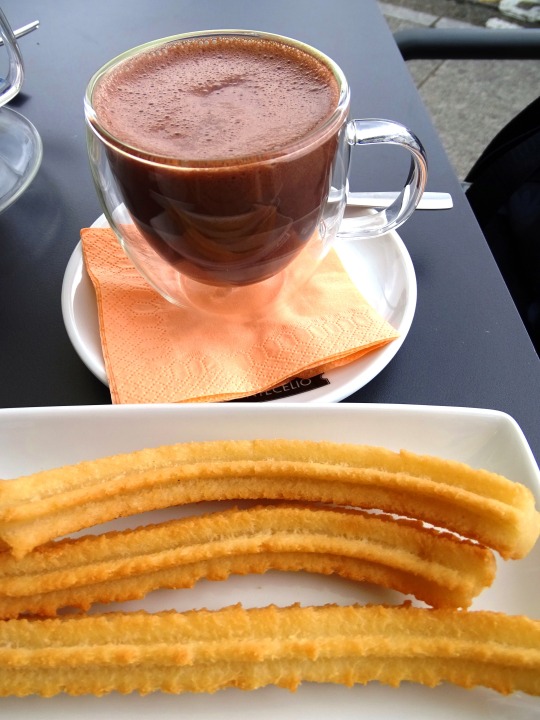

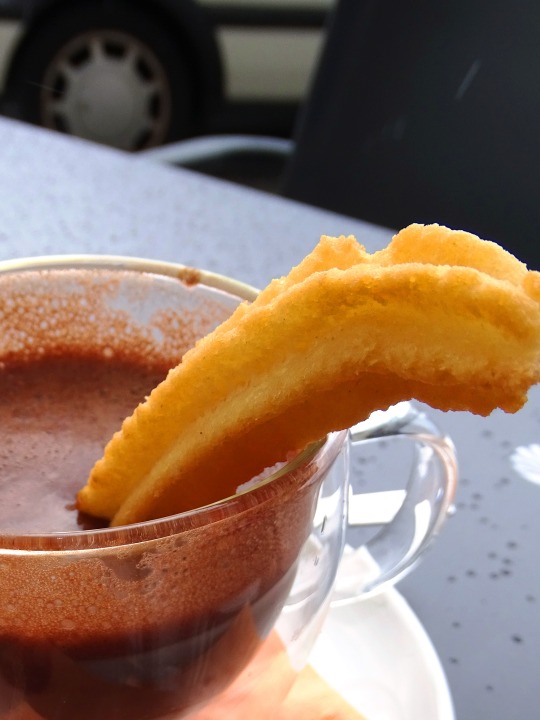
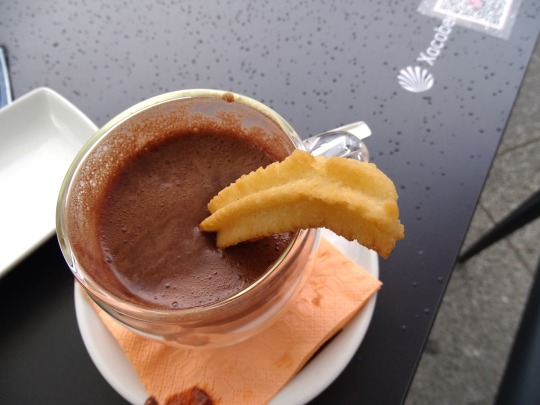
National Hot Chocolate Day
Made with creamy milk and yummy cocoa, this sugary sweet treat is delicious when enjoyed by itself, or can be a great basic recipe that can then be used to get creative with by adding unique flavors, spices and even liqueurs.
Oh the joy of a cup of steamy hot chocolate on a cold winter day! Hot chocolate provides a delicious and sweet treat that warms the body and the heart.
It’s time to learn more about and celebrate National Hot Chocolate Day!
History of National Hot Chocolate Day
Hot chocolate has a long and delightful history that goes along with the history of the cacao bean. In fact, the first way that chocolate was enjoyed was as a beverage, although quite different from the way people drink hot chocolate today. When cacao beans were first used by ancient people groups, the beans were likely ground coarsely and placed in hot water to create a bitter drink that was used in religious ceremonies.
As chocolate beans and sugar both became more accessible in Europe, the cocoa solids were then used to make chocolate bars and chocolate candies. But a favorite continues to be the warm, sweet milky beverage that is known as hot chocolate!
By 1828, powdered chocolate was made that made it much easier to stir into milk. And when Nesquik was invented in 1948, the first chocolate milk powder made a quick and tasty addition to milk that could also be heated up into hot chocolate.
National Hot Chocolate Day was established to show appreciation for and encourage the celebration of this delicious drink that soothes and comforts the youngest and oldest of souls – and everyone in between!
National Hot Chocolate Day Timeline
1500 BC Earliest traces of cocoa beans
The Olmec, Mayan and Aztec peoples all may have incorporated chocolate drink into their religious ceremonies.
1657 London opens its first chocolate house
Near Bishop’s Gate, a Frenchman opens the first house serving “an excellent West India drink”.
1968 The band ‘Hot Chocolate’ is formed
This band from the UK brings an eclectic mix of reggae, soul, rock and disco over the next several decades.
2004 Starbucks begins serving hot chocolate
Catering to those non-coffee drinkers, the coffee mogul places hot chocolate on their menu.
2004 Polar Express film features hot chocolate
The train taking children to the North Pole serves hot chocolate along with a delightful song.
How to Celebrate National Hot Chocolate Day
Anyone can join in on the fun and celebration of National Hot Chocolate Day, whether keeping it simple or making a big deal out of it! Take a look at some of these fun ways to bring joy and delight in honor of the day:
Enjoy a Cup of Hot Chocolate
Whether using a powdered mix, making it at home from scratch or going out to a coffee shop, the most important task of the day is to drink and enjoy a delicious cup of toasty hot chocolate. The easiest way, of course, is to add a pre-made mix to hot milk, stir it up and drink. Adding marshmallows or whipped cream on top can turn it into an extra delicious treat.
For a more sophisticated hot chocolate drink in honor of National Hot Chocolate Day, try using an online recipe that is often used in many different coffee shops and cafes. Typically, these recipes will include whole milk, unsweetened cocoa powder, granulated sugar, bittersweet or semisweet chocolate and vanilla extract. The ingredients are mixed together, cooked on the stove, melted and whisked to a creamy hot chocolate perfection.
Learn the Health Benefits of Hot Chocolate
Although the most popular versions of hot chocolate typically do contain quite a bit in the form of sugars and carbs, some homemade varieties that contain actual dark chocolate and milk (or plant-based milks) can provide some interesting health benefits. Check out some of these ways that hot chocolate might be good for you:
Good for heart health
Brain power booster
Rich in antioxidants
Helps with the memory
According to Harvard research, hot chocolate contains flavanols and phytosterols, which are able to reduce the levels of bad cholesterol in the blood, which can be an indicator of heart disease. Plus, the antioxidants are helpful in the fight against heart disease as well.
Scientific research suggests that the flavanols in cocoa tend to increase the brain’s oxygen levels and activate neurons at a higher rate – equaling better brain performance and improved cognitive function.
Dark chocolate contains antioxidants, like polyphenols and flavonoids, which can help reduce the negative impact of aging, as well as boosting the immune system and reducing inflammation.
One study has shown that drinking hot cocoa twice a day could not only give a memory boost, but may also reduce the risk of Alzheimer’s disease in some people.
Get Creative with Hot Chocolate
Hot chocolate is certainly tasty when it is enjoyed on its own, but it also offers a ton of options when new varieties are made with just a bit of creative flair in the kitchen! Check out some of these ideas for taking National Hot Chocolate Day to the next level:
Spicy Mexican Hot Chocolate. Cinnamon, chili powder and dark chocolate turn this hot chocolate drink into something extra special.
Hot Chocolate with Peppermint. This one can be made using either peppermint flavored extract or with chopped up peppermint sticks or peppermint candies.
Boozy Pumpkin Hot Chocolate. Add some pumpkin pie spice to a hot chocolate recipe and then toss in a bit of winter warmth using Kahlua, bourbon, peppermint schnapps or a bit of cinnamon whiskey.
Nutella or Peanut Butter Hot Chocolate. One fun and easy way to add a bit of flavor to hot chocolate is to simply stir in a scoop of peanut butter or Nutella to give a smooth and creamy flavor. This is a fun one that kids can easily take part in as well!
Gift Some Hot Chocolate to Loved Ones
Perhaps National Hot Chocolate Day is a time to not only enjoy some hot chocolate on your own, but to spread the love and cheer by sharing in the day with some friends, coworkers or family members. It could be something as simple as surprising a coworker with a cup of hot chocolate picked up from the local coffee shop on the way to work.
Or maybe celebrating the day means creating special handmade packets of hot chocolate mix. Put them in decorative bags, add some candy kisses or peppermint disks and place it inside of a cute new hot chocolate mug. Make it special by tying a little colorful ribbon around the gift or placing a bow on top, just for this fun and festive occasion.
National Hot Chocolate Day FAQs
Is hot chocolate good for you?
Hot chocolate made with real chocolate contains flavonoids and antioxidants which may be healthy, but it also can have a lot of sugar and carbs.
How much caffeine is in hot chocolate?
Powdered hot chocolate mixes may contain from 0-5mg of caffeine while hot chocolate made with real cocoa powder may have up to 25mg of caffeine.
How to make hot chocolate?
Hot chocolate can easily be made by heating up milk and adding cocoa powder, sugar and melted chocolate.
Does Starbucks have hot chocolate?
Most Starbucks stores serve hot chocolate made with milk and chocolate syrup.
Does hot chocolate help you sleep?
The milk and cocoa in hot chocolate may be soothing and help you to fall asleep.
Source
#hot chocolate is made with milk and not with water#always with milk#churro#Viveiro#snack#street food#original photography#National Hot Chocolate Day#31 January#Spain#Northern Spain#Southern Europe#summer 2021#travel#vacation#NationalHotChocolateDay#drink#national day
2 notes
·
View notes
Text
Indulge in Richness: K Cups Hot Chocolate Variety Pack
Hot chocolate is an undying indulgence that has warmed hearts and souls for centuries. There's something comforting about the rich, velvety flavour of warm chocolate, mainly when it's easily made inside the form of K Cups. With K-Cup's warm chocolate range packs, you can enjoy various flavours from the comfort of your house, growing the right cup in seconds. In this article, we can explore the history of hot chocolate, the innovation behind K Cups, and how Two Rivers Direct gives a selection of k cups variety pack hot chocolate to satisfy each chocolate lover's cravings.

A Brief History of Hot Chocolate
Hot chocolate, recognized for its warm, creamy texture, has a wealthy and varied record that dates back many years. The drink's origins can be traced back to the ancient Mayans and Aztecs, who first determined the capacity of the cacao bean. However, their hot chocolate model turned entirely different from what we enjoy these days.
The Origins: Mayan and Aztec Hot Chocolate
The historic Mayans created a drink called "xocolatl," a cold, sour beverage crafted from floor cacao beans, chilli peppers, and water. It has frequently been eaten up throughout religious ceremonies and celebrations. The drink became believed to be a gift from the gods, and the Aztecs even used cacao beans as forex.
European Influence and Transformation
When Spanish explorers introduced cacao beans to Europe in the sixteenth century, hot chocolate underwent a considerable transformation. Sugar, vanilla, and milk had been delivered to the mixture, growing the sweet and creamy beverage we now realize and love. By the 17th century, warm chocolate had become a luxurious drink for European aristocracy, loved in royal courts and excessive-society gatherings.
The Modern-Day Hot Chocolate
Fast forward to the 19th and 20th centuries, and hot chocolate became extra accessible to the general public. Innovations in processing cacao, including the Dutch method for cocoa powder, allowed manufacturers to create hot chocolate mixes that each person would love immediately. The modern era added further comfort with the introduction of warm chocolate K Cups, making it simpler than ever to brew a delicious cup in seconds.
The K Cups Hot Chocolate Variety Pack: A World of Flavors
One of the excellent matters about K-Cup hot chocolate range packs is the sheer variety of flavours. Whether you're a fan of conventional milk chocolate or experience more adventurous combinations, there's a K-Cup flavour to fit your flavour. Hot chocolate variety packs often encompass several flavours, from traditional to decadent, allowing you to discover new tastes and enjoy your favourite ones.
Classic Hot Chocolate
For folks who love the timeless taste of creamy milk chocolate, classic warm chocolate K Cups ought to strive. These pods incorporate wealthy, excellent cocoa blended with the proper sweetness to create a clean and fulfilling drink. Perfect for cold mornings, comfortable afternoons, or as a nighttime deal, classic hot chocolate K-Cups carry the conventional taste of homemade hot cocoa for your Keurig machine.
How Two Rivers Direct Offers a Variety Pack of K Cups Hot Chocolate
Two Rivers Direct is a relied-on brand known for providing an extensive variety of K-Cup options, and their warm chocolate variety packs aren't any exception. With a robust consciousness of refined taste, Two Rivers Direct curates a choice of hot chocolate K-Cups that cater to numerous tastes, ensuring that every chocolate lover reveals something they enjoy.
A Wide Selection of Flavors
Two Rivers Direct specializes in presenting variety packs that consist of more than one flavour of warm chocolate, providing something for all and sundry. Whether you're a fan of classic milk chocolate, crave the formidable taste of dark chocolate, or need to attempt laugh flavours like peanut butter cup or mint chocolate, Two Rivers Direct has you protected. Their variety packs are designed to give you the excellent of both worlds: traditional favourites and intriguing new alternatives.
Conclusion
Whether you're a lifelong hot chocolate lover or new to K Cups, indulging in a warm chocolate variety % is a deal that offers both convenience and a vast range of flavours. With Two Rivers Direct's first-rate choice, you may discover the richness of traditional hot chocolate, bold darkish chocolate, and unique flavours, even as taking part in the benefit of single-serve brewing. So, grab your favourite mug, pop in a K-Cup, and appreciate the warmth and richness of an excellent cup of warm chocolate.
0 notes
Text
Chocolate
Chocolate is a popular treat made from cocoa beans, which are derived from the cacao tree. It has a rich, indulgent flavor and is enjoyed in various forms around the world. Here are some key points about chocolate:
Cacao Beans: Chocolate is made from the seeds of the cacao tree, which are commonly referred to as cacao beans or cocoa beans. These beans are harvested from cacao pods, which grow on the trunk of the cacao tree.
Processing: The process of making chocolate begins with the fermentation and drying of cacao beans, followed by roasting to develop flavor. The roasted beans are then cracked open to remove the outer shell, revealing the cacao nibs inside. The nibs are ground into a paste called chocolate liquor, which contains cocoa solids and cocoa butter.
Types of Chocolate: There are several types of chocolate, each with varying amounts of cocoa solids, cocoa butter, sugar, and milk. Some common types include:
Dark Chocolate: Contains a high percentage of cocoa solids and cocoa butter, with little to no added sugar or milk.
Milk Chocolate: Contains cocoa solids, cocoa butter, sugar, and milk powder or condensed milk, giving it a creamy and sweet flavor.
White Chocolate: Made from cocoa butter, sugar, and milk solids, with no cocoa solids. It has a rich and creamy texture but lacks the distinct chocolate flavor of dark or milk chocolate.
Semisweet and Bittersweet Chocolate: These are types of dark chocolate with varying degrees of sweetness and cocoa content. They are often used in baking and cooking.
Health Benefits: Chocolate contains antioxidants called flavonoids, which may have various health benefits, including improved heart health, reduced inflammation, and enhanced cognitive function. However, these benefits are primarily associated with dark chocolate, which has a higher cocoa content and lower sugar content compared to milk chocolate.
Uses: Chocolate is enjoyed in many forms, including bars, truffles, bonbons, and candies. It is also used as an ingredient in baking and cooking, adding flavor and richness to desserts, pastries, and beverages such as hot chocolate.
Cultural Significance: Chocolate has a long history of cultural significance, dating back to ancient civilizations in Mesoamerica, where cacao beans were used as currency and consumed in ceremonial drinks. Today, chocolate is enjoyed as a popular indulgence and gift for special occasions such as Valentine's Day, Easter, and Christmas.
1 note
·
View note
Text
Rapé: Exploring the Sacred Amazonian Snuff with Profound Healing Potential"

Introduction
Deep within the lush Amazon rainforest of South America, indigenous tribes have practiced a sacred ritual known as Rapé (pronounced "ha-peh" or "rapey"). This powerful and ancient tradition involves the administration of a snuff made from a blend of tobacco, ashes, and medicinal plants. For centuries, Rapé has been revered for its potential to induce physical, emotional, and spiritual healing. In this comprehensive 1000-word article, we will embark on a journey to uncover the rich history, cultural significance, ingredients, rituals, and the growing interest in Rapé as an alternative therapy.
The Origins and Cultural Significance of Rapé
Rapé is deeply rooted in the indigenous cultures of the Amazon basin, particularly in Brazil and Peru. The term "Rapé" is thought to derive from the Portuguese word for "snuff." However, in the indigenous languages of these regions, it often holds deeper meanings, such as "sacred snuff" or "divine medicine." This reflects its profound role in the spiritual and healing traditions of various tribes, including the Yawanawa, Katukina, Huni Kuin, and many others.
Cultural Significance of Rapé:
Spiritual Connection: Rapé is considered a potent tool for establishing a deeper connection with the spiritual realm. Indigenous tribes believe it facilitates communication with the spirits of nature, ancestors, and the divine.
Healing and Purification: Rapé is used for its purgative properties, believed to cleanse the body of toxins, negative energies, and illnesses. It is often employed in shamanic healing ceremonies to support physical and emotional well-being.
Enhancing Perception: Users of Rapé report heightened sensory perception, increased focus, and mental clarity. It is often used to prepare for rituals, ceremonies, and hunting.
The Ingredients of Rapé
Rapé is meticulously prepared from a blend of sacred and medicinal components, each contributing its unique properties and energies to the snuff. The primary ingredients typically include:
Tobacco (Nicotiana rustica or Nicotiana tabacum): Tobacco is an essential ingredient in Rapé and holds a central role in indigenous cultures. It provides grounding and protective energies.
Ash: Various tree ashes are added to the mixture, such as the ashes of the Tsunu, Murici, or Cacao tree. These ashes serve to alkalize the blend and activate its potency.
Medicinal Plants: Each indigenous tribe may have its own secret recipe, incorporating specific medicinal plants and herbs for various purposes, such as healing, vision quests, or enhancing spiritual connections.
The Rapé Ceremony
The Rapé ceremony is a deeply spiritual and ritualistic practice, conducted with great reverence and intention. It typically involves the following steps:
Preparation: The shaman or practitioner begins by meticulously preparing the Rapé snuff, blending the ingredients to create a fine powder. Special care is taken to set the sacred space for the ceremony.
Intentions: Participants gather and set their intentions for the ceremony, often focusing on healing, purification, guidance, or a specific spiritual quest.
Application: The practitioner administers Rapé to each participant using a special blowpipe or a small bamboo tube. A small amount of the powdered snuff is blown into each nostril, one at a time.
Purging: Rapé often induces strong purging responses, including sneezing, coughing, and sometimes vomiting. These purges are seen as a physical and spiritual cleansing, removing toxins and negative energies.
Integration: After receiving Rapé, participants are encouraged to sit quietly and reflect on their experiences. Some may enter deep states of meditation, experience visions, or feel a profound connection to the spiritual world.
Contemporary Applications and Interest
In recent years, Rapé has garnered international attention beyond indigenous communities. It has become a subject of interest in alternative healing, spirituality, and personal development. Some contemporary applications and reasons for its popularity include:
Healing and Transformation: Individuals seek Rapé as a means for physical and emotional healing and personal transformation. It is used to address issues such as anxiety, depression, and addiction.
Spiritual Exploration: Rapé is employed by those seeking to expand their spiritual horizons, gain insights, or embark on shamanic journeys.
Mindfulness and Clarity: Some people use Rapé to enhance mindfulness, improve focus, and gain mental clarity.
Ceremonial and Therapeutic Use: Rapé is integrated into various holistic and therapeutic practices, including Ayahuasca ceremonies and shamanic healing sessions.
Safety and Considerations
While Rapé is generally considered safe when administered by trained practitioners, it is essential to approach the practice with caution and mindfulness:
Expert Guidance: Seek experienced and reputable practitioners who understand the traditional and ceremonial aspects of Rapé.
Medical Considerations: Rapé may not be suitable for everyone, particularly individuals with certain medical conditions or sensitivities. Consult with a healthcare professional before participating.
Set and Setting: The ceremonial environment and one's mindset play a crucial role in the Rapé experience. Ensure you are in a safe, comfortable, and respectful setting.
Respect for Tradition: If you are participating in a traditional ceremony, honor the customs and traditions of the indigenous cultures from which Rapé originates.
Conclusion
Rapé, the sacred Amazonian snuff, provides a window into the ancient wisdom and spiritual practices of indigenous tribes. It continues to captivate individuals worldwide who are drawn to its potential for healing, transformation, and spiritual exploration. While the practice of Rapé carries profound cultural and spiritual significance, it is essential to approach it with respect, mindfulness, and the guidance of experienced practitioners. Whether used as a tool for self-discovery, healing, or spiritual connection, Rapé remains a testament to the rich tapestry of indigenous knowledge and traditions found deep within the Amazon rainforest.
1 note
·
View note
Note
I hear what you're saying.
I'm gonna respectfully disagree.
While I certainly endorse using whatever salt you have on hand for whatever purpose you may need it, I personally experience a subtle difference between table salt and Himalayan salt.
Is it marginal? Sure. You could say that.
Does it impact my decisions when I have both readily available at my discretion? Absolutely.
My intuitive observations tell me that the differences in processing and mineral composition do, in fact, result it different energetic signatures. I experience Himalayan salt as having more vitality and softness, vaguely reminiscence of the Venusian energy found in rose petals. Table salt feels sharp and stern and less "alive," so to speak. I also experience the same subtle differences in various types of sugars.
In my studies of Evolutionary Herbalism, I frequently encounter examples of indigenous medical traditions that characterize two different plants of the same exact species as two different types of medicine because they grow in two different locations.
Additionally, I feel like the approach of "nah, salts are all the same" then opens the door to saying that all candles are the same regardless of color and so are all quartz varieties. Like... are amethyst, citrine, and clear, milky, smoky, & rose quartz all the same because they're all just different colors of the same rock?
Subtle differences do, in fact, make a difference when you are working with subtle energies.
As an applicable example: when I make a ceremonial cacao that emphasizes bringing love and nurturing into the heart space, I like to add rose, cardamom, and vanilla. I will also frequently add a sprinkle of Himalayan salt when I have it available because the soft pink color from the iron deposits resonate with the rest of the ingredients. However, I basically never add table salt because it just doesn't feel in sync with everything else to me. If table salt is all that I have, I just dont add any since it's not really required.
If you're looking for more of a witchy spell casting example, think of the difference in something as simple as utilizing Himalayan salt in a cleansing self-love bath versus using table salt in a banishing powder. Could you use any salt for either one? Sure. Why not? But you can also absolutely choose a salt that is subtly more in resonance with your intention.
Does that mean you have to go out and buy every kind of salt known to man? No, of course not. Throw table salt at everything if that's what you've got.
What it does mean, however, is that you have the power to engage with nuance in your practice at whatever level you so choose.
Is there a difference between table salt, kosher salt, and Himalayan salt? I would assume they have the same overall effect, but have you ever noticed anything dissimilar?
Magically speaking? No.
I'm sure there's something different about the source and maybe the mineral makeup or iodine content. Table salt has anti-clumping chemicals and Himalayan salt and kosher salt generally don't have those additives, that much I know. And there's the particle size to consider. (Grains vs granules vs flakes vs coarse salt.)
But apart from that? I've never really noticed a difference between salts when using them in my magic. I usually default to table salt because it's cheap and easily obtained. The only time I prefer sea salt or Himalayan salt to table salt is when I'm making something that logistically works better with coarse salt.
20 notes
·
View notes
Text
Explore More About Ceremonial Cacao, Hot Cocoa, and Drinking Chocolate
Drinking chocolate and hot cocoa differ not only in price but also in component quality and concentration. The two products share a fundamental component — cacao — but are prepared and mixed differently. Hot cocoa is frequently bland and sugary, but drinking chocolate has a rich and nuanced flavor that can be sweetened or left unsweetened.
What Exactly Is Hot Cocoa?
The cacao comes from Peru. Hot cocoa is a beverage and drink combination that dates back to the nineteenth century. Previously, hot chocolate was a nobility-only beverage made from coarsely crushed cacao beans and sugar. A Dutch scientist built the first cocoa butter pressed in the early 1800s, a contraption that removed around half the fat from cacao beans.
This left behind low-fat cacao cakes that could be ground into a chocolate powder. Cocoa butter quickly found a market in cosmetic products industries, making cocoa powder less valued but abundant.
Cacao processors combined cocoa powder and sugar to create a therapeutic drink. While sugar dissolved easily in liquids, consumers discovered that the new powdered chocolate sank.
Soon after, those Dutch chemists found a method for alkalinizing cocoa powder, which made it simpler to dissolve in water. This method is now known as "ditching," and it is used by huge hot chocolate makers.
What Is Chocolate Drinking?
Drinking chocolate is often a cup of pure chocolate thinned out with hot water or milk with hot cocoa mixed to flavor the beverage. Cacao premium drinking chocolate is found in dark and milk chocolate variants, making it easy to find a healthy alternative.
Before the development of contemporary chocolate, there was no technology to refine chocolate to create the smooth product of bean-to-bar chocolate that we know today, hence the majority of chocolate drinks were gritty. In that regard, drinking chocolate now is more decadent and nutritious than hot cocoa, which is an older beverage.
Drinking chocolate is a richer beverage than hot cocoa. Cacao Premium Drinking Chocolate is the ideal indulgence at any time of day or night.
What Exactly Is Ceremonial Cacao?
Ceremonial cacao is a variation of the popular drinking chocolate items we sell. Ceremonial-grade cacao is untempered chocolate prepared from pure cacao bean paste that is all-natural, unadulterated, and 100 percent pure.
Although it may not look or taste like your favorite chocolate bar, it has several health advantages and is being adopted as a new morning routine by many, frequently as a substitute for coffee.
Whether you like it or not, the word "ceremonial cacao" has captivated the public's attention. While ceremonial cacao may signify different things to different individuals, cacao is used in this context as a ritual that may boost mood and serve as a conduit for opening the heart.
0 notes
Text

Guys I just bought Ceremonial Grade Cacao
First of all, wtf does that even mean
Secondly, I will be summoning the chocolate demon, you're all invited
8 notes
·
View notes
Text
Nourishing the Soul: Exploring the Wonders of Ceremonial Cacao Powder
In the realm of holistic wellness, certain ancient practices and natural remedies are experiencing a resurgence, captivating the interest of those seeking a deeper connection with mind, body, and spirit. Ceremonial cacao, often in the form of a rich and velvety powder, has emerged as a potent elixir that transcends its culinary uses. In this article, we delve into the wonders of Ceremonial Cacao Powder, exploring its cultural roots, health benefits, and its role in contemporary well-being rituals.
Cultural Heritage and Ritual Significance: Ceremonial cacao holds a profound place in the cultural traditions of indigenous Mesoamerican civilizations. Once reserved for sacred ceremonies, cacao was believed to be a gift from the gods, fostering unity and spiritual connection. Today, ceremonial cacao continues to honor these cultural roots, providing a bridge between ancient wisdom and modern practices.
The Essence of Pure Cacao: Unlike conventional cocoa powder, ceremonial cacao is often sourced from heirloom varieties of cacao beans, processed at lower temperatures to preserve its nutritional integrity. The result is a rich and unadulterated cacao powder that retains its natural flavors, aromas, and, most importantly, its potent health-promoting compounds.
Heart-Opening Properties: Ceremonial cacao is revered for its heart-opening properties, both metaphorically and physiologically. Rich in compounds such as theobromine and phenylethylamine, it is believed to enhance mood, promote a sense of well-being, and open the heart chakra. Many practitioners incorporate ceremonial cacao into mindfulness and meditation practices to deepen their connection with emotions and spirituality.
Nutrient-Rich Elixir: Ceremonial cacao is a nutritional powerhouse, boasting a myriad of essential nutrients. It is a natural source of magnesium, iron, and antioxidants. These compounds contribute to overall well-being, supporting cardiovascular health, boosting energy levels, and providing a nourishing supplement for those seeking a holistic approach to nutrition.
Mindful Meditation and Focus: The ceremonial consumption of cacao is often accompanied by mindfulness practices, meditation, or guided ceremonies. The subtle stimulants in cacao, including theobromine and caffeine, provide a gentle lift in alertness and focus. This makes ceremonial cacao an ideal companion for those looking to enhance their meditation sessions or engage in mindful activities.
Spiritual Connection and Introspection: Ceremonial cacao is cherished for its ability to facilitate introspection and spiritual connection. The mindful consumption of cacao in ceremonial settings is believed to create a space for self-reflection, intention setting, and inner exploration. Many find that the calming yet uplifting effects of ceremonial cacao enhance their ability to connect with their inner selves.
Community and Shared Experiences: Ceremonial cacao is often associated with communal rituals and shared experiences. Whether partaken in group ceremonies, workshops, or intimate gatherings, the shared consumption of ceremonial cacao fosters a sense of community and unity. This communal aspect adds a dimension of connection and shared intention to the ceremonial experience.
Creative Inspiration: The heightened state of awareness induced by ceremonial cacao is thought to stimulate creativity and inspiration. Artists, writers, and creatives often incorporate ceremonial cacao into their creative processes, using its subtle effects to tap into their artistic flow and explore new realms of imagination.
Conclusion:
Ceremonial cacao powder, with its rich cultural heritage and multifaceted benefits, offers a pathway to a deeper and more intentional approach to well-being. As individuals explore the wonders of this sacred elixir, they not only embrace a connection to ancient traditions but also tap into a source of nourishment for the body, mind, and soul. Ceremonial cacao invites us to savor the present moment, fostering mindfulness, spiritual connection, and a renewed appreciation for the profound gifts that nature provides.
For more details, visit us:
Best Ceremonial Cacao Bundle Australia
buy ceremonial cacao australia
Best Ceremonial Cacao
Ceremonial Cacao Australia Wholesale
#Shop Ceremonial Cacao Online#Ceremonial Cacao Powder#Ceremonial Grade Cacao#Ceremonial Cacao in Australia
0 notes
Text
Cacao Ceremonial Grade Elevates Mood!
If you are looking for the ceremonial grade cacao, then you have come to the right place. Only top quality cacao powder of ceremonial grade is supplied at this venue and the intake of such supplement can make a big difference for your body and mind. In Peru, the Ashaninka tribe is harvesting the organic cacao for a long time now. This tribe is known for their harvesting methods which involve the following of culture, tradition and highest quality standards. Well, differentiating between the cacao ceremonial grade and the non-ceremonial grade cacao is a tough job. Until and unless you are a real enthusiast of cacao, this can become very tough for you to determine which cacao is the ceremonial one and which is not. This is where you also need to take the help of the experts who can tell you more in this regard.

· This can be your turn to explore a vibrant life
If you have ever heard the term cacao ceremony, then you also know the fact that this trend has managed to become very popular in recent years. People who are looking forward to good health both mentally and physically also want to consume the cacao ceremonial grade on a daily basis. This comes in the powder form and due to this reason, you can easily digest it. You can even add it with your daily meals and consume it easily.
· Reap the health benefits
There are many health benefits that the cacao powder can bring for you. If you want to reap all those big health benefits, then you should consume it in the powder form.
0 notes
Text
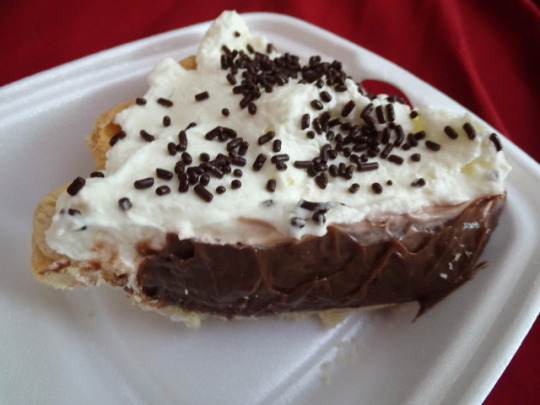
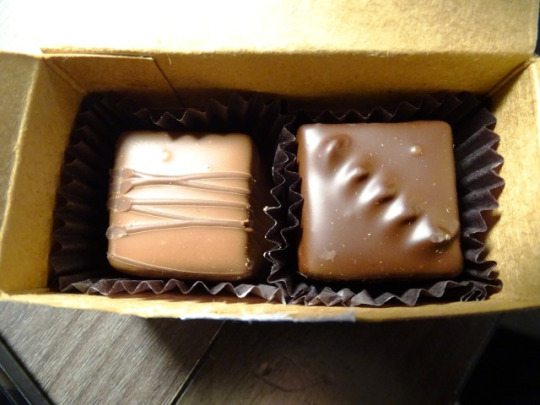
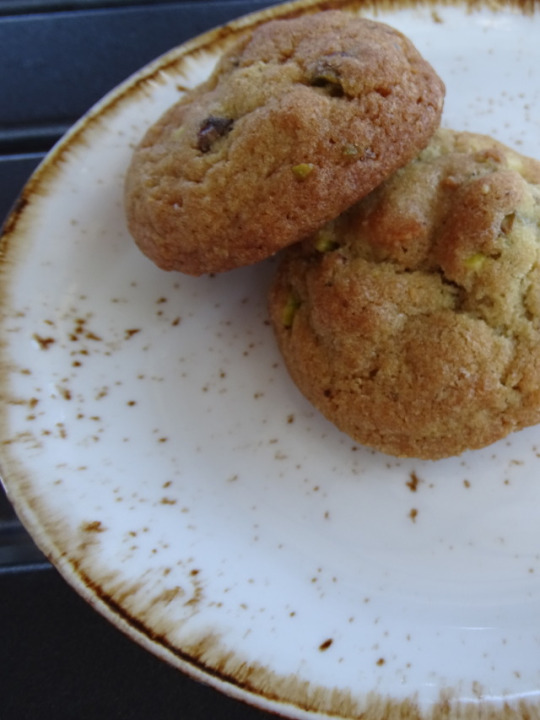



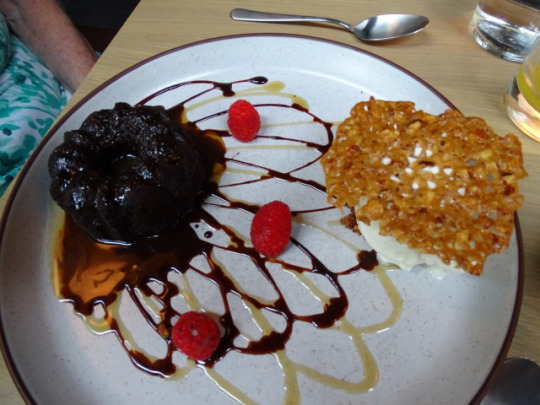








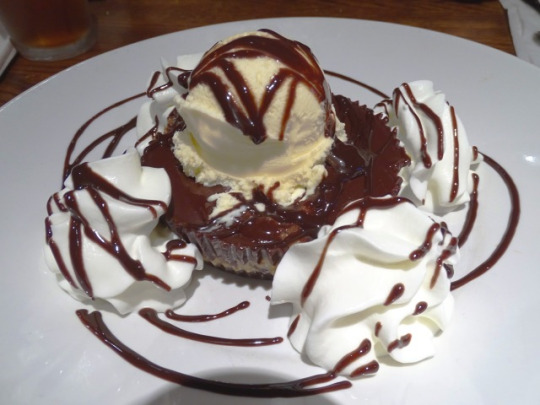
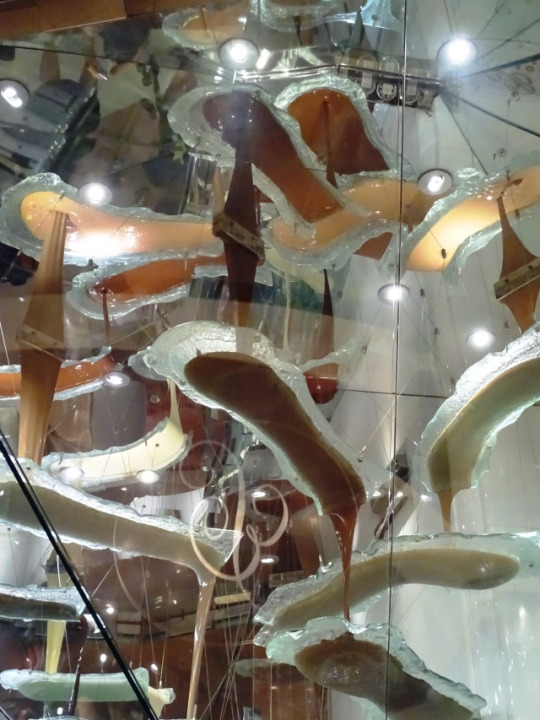

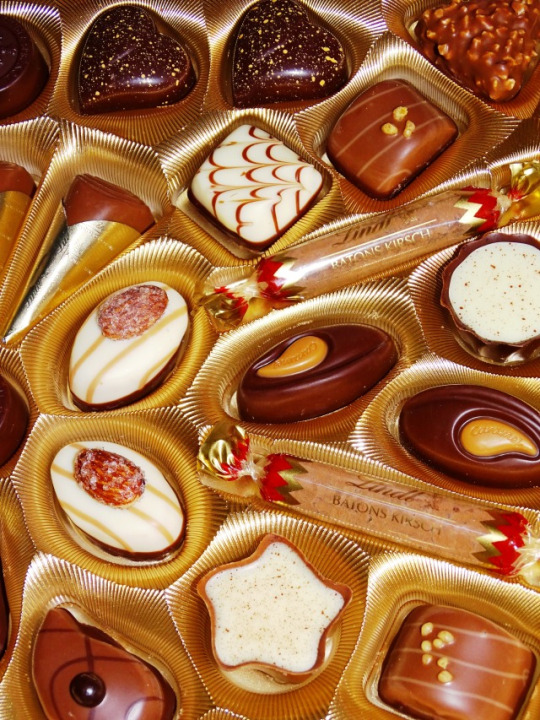


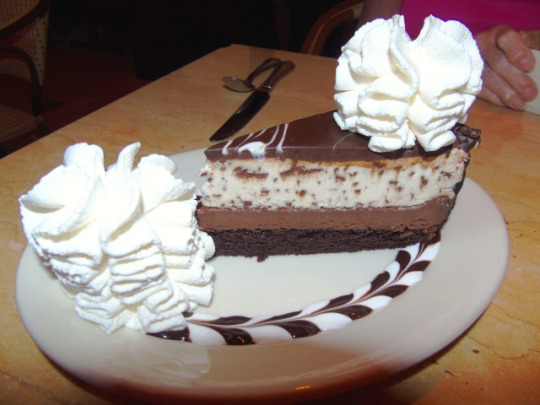


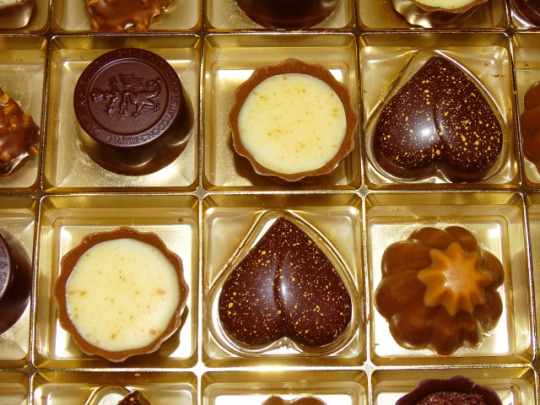
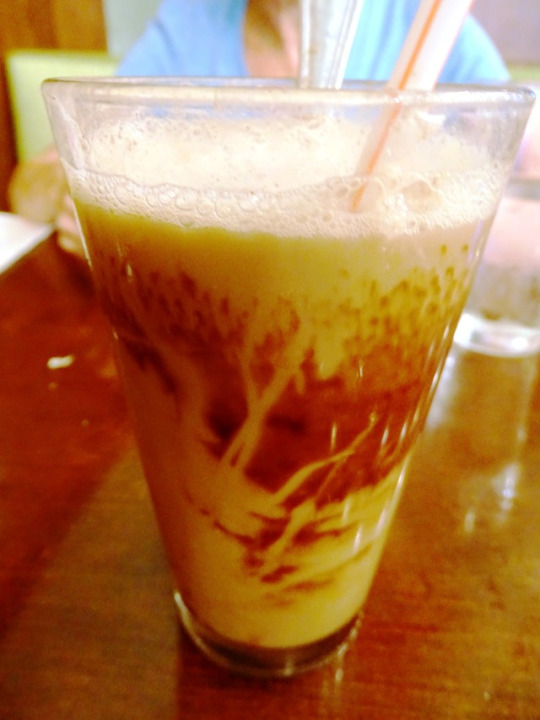




National Chocolate Day
With so many different varieties of this delicious treat, it can be so hard to pick a favorite. What will you choose to indulge your sweet tooth?
A food that encourages passion, many people would consider chocolate to be a gift to the world. Whether eaten in the form of a chocolate bar, enjoyed as a chocolate beverage or used to bake a variety of desserts, chocolate has a rich history and a bright future!
History of National Chocolate Day
Dating back more than 2000 years, chocolate seems to have originated in the Amazon where the cacao beans are made into a bitter-ish drink. Ancient Mayans and Olmecs of southern Mexico, as well as Aztecs were so enamored by the chocolate drink that some said that it must have come from the gods! Which is why it was likely used as a ceremonial drink at the time.
The name of the tree that produces the beans for making chocolate is Theobroma Cacao which, when translated, means “food of the gods”. It was named by taxonomist Carolus Linneaus who likely named it after the fact that Aztecs considered chocolate to have been something that was given by the gods.
By the time chocolate was discovered by Westerners in the New World and then made its way to Europe in the 1500s, it was something that was reserved for the wealthy and upper classes. It was not only enjoyed by them for taste reasons, but it had been discovered that the cocoa beans also had some health benefits!
Sugar was eventually added to the concoction and, as the product evolved over the next couple of centuries, it went from being only something that was made into a beverage but was developed into the eating chocolate that people enjoy today.
In the 19th century, along with the development of the industrial revolution, new processes came about that offered the opportunity to produce chocolate on a more regular basis. Of course, chocolate companies began cropping up in England, Europe and the United States. Fry & Sons created the world’s first chocolate bar in 1847.
Today, chocolate continues to be a huge industry, with cocoa beans grown in warm climates and exported to chocolate manufacturers all over the globe. Whether it’s the Hershey’s chocolate company in Pennsylvania, the Lindt company in Switzerland, or a smaller local chocolate company, it’s fun to enjoy access to this delicious treat.
Now it’s time to celebrate National Chocolate Day!
National Chocolate Day Timeline
2000 BC
Mayans enjoy chocolate
Even though it is used ritualistically as a drink, chocolate is not only saved for the wealthy and powerful but is likely enjoyed by common people.
13th Century AD
Aztecs revere chocolate
Taking the love of chocolate to the next level, Aztecs use cacao beans as a currency.
1609
First book devoted to chocolate
As the love for chocolate increases in Europe, a book is published in Mexico that is dedicated entirely to chocolate, “Libro en el cual se trata del chocolate”.
1765
First chocolate factory in the US
Dr. James Baker and John Hannon start a chocolate factory in Massachusetts.
1876
Milk Chocolate is created
Before this time, chocolate was only dark but when a Swiss chocolatier adds powdered milk to the chocolate process, things change drastically.
How to Celebrate National Chocolate Day
National Chocolate Day offers tons of different opportunities to get involved with celebrating and enjoying the day! Consider trying out some of these fun and delicious ideas:
Take a Tour for National Chocolate Day
Have tons of fun learning all about how chocolate is made and, hopefully, get to take home some samples! Take a tour of a chocolate company like Hershey’s Chocolate World in Hershey, Pennsylvania. Or enjoy the Lindt Home of Chocolate located in Zurich, Switzerland.
Or one great place to learn a lot about the chocolate industry would be at The Institute of Culinary Education in New York City. With the country’s first educational bean-to-bar chocolate lab, the institute offers classes that teach all about the creative process of chocolate.
Learn Some Bits of Trivia About Chocolate
What could be a better day than National Chocolate Day to brush up on some fun facts related to chocolate? Plus, this would also be the perfect day to share a few bits of chocolate trivia with friends, in honor of the day! Get started with some of these facts:
One pound of chocolate requires 400 cocoa beans and each tree produces approximately 2500 beans, so one tree can make about 6 pounds of chocolate.
Cacao trees are very delicate and farmers typically count on losing up to 30% of their crop each year, so being a chocolate farmer is a volatile business!
Although cocoa beans seem to have originated in the New World, the most cocoa farms, around 70% of those in the world, are located in West Africa, with Cote d’Ivoire as the single largest producer of cocoa.
It takes approximately 4-5 years for a newly planted cacao tree to actually produce fruit, so it requires a great deal of patience from the chocolate farmers.
Share Chocolate with Friends
Any day worth celebrating is worth enjoying and sharing with friends! National Chocolate Day is a great time to pick up a variety of chocolates and make plans to share them. Choose some chocolate bars to pass around to coworkers at the office, or grab a box of chocolates to share with the family at home.
Got a big chocolate lover in your life? Perhaps send them a gift of chocolate in honor of this day. It’s easy to use this opportunity as an excuse to give a gift!
Try Chocolate in Some New Recipes
Though many people only think of chocolate as something that should be enjoyed as a sweet dessert, there are plenty of delicious recipes out there that include chocolate as part of the flavors of a savory dish.
Perhaps, in honor of National Chocolate Day, it would be fun to try adding a bit of chocolate to every meal of the day! Here are some ideas for savory chocolate dishes to get started with:
Cocoa Rubbed Baby Back Ribs. Create a rub for ribs that includes warm spices such as cinnamon, ginger, and allspice, complemented with flavors of mustard and cocoa powder blended together.
Chocolate Beef and Bean Chili. Chocolate has often been used as an ingredient in certain types of chili, and this one is super delicious as it is made with a chocolate stout beer, providing a unique flavor.
Gascon-Style Beef Stew with Chocolate. This hearty, French-style stew offers the delicious flavors of chocolate, Armagnac, and Madiran wine – or Pinot Noir for a lighter version of the stew.
Chicken with Poblano Mole Sauce. This most iconic mole sauce from Mexico offers flavors like ancho, pasilla and mulato chiles, along with warm spices and, of course, velvety smooth chocolate.
National Chocolate Day FAQs
Can chocolate go bad?
Though some chocolate does not have a use by date, it can start to get chalky or cracked on the surface and may not taste as good as when it was first made.
What is white chocolate?
White chocolate can be made from the cocoa butter but does not necessarily contain the cacao nibs.
Did chocolate come from the new world?
Yes, the first evidence of chocolate consumption seems to come from the Aztec and Mayan cultures in what is modern-day Mexico.
Did chocolate used to be expensive?
When it came to Europe in the 1500s, chocolate was an import that was only enjoyed among the wealthy and elite.
Is chocolate poisonous to cats?
Yes, just like dogs, cats should not eat chocolate because it contains theobromine, which can be toxic to pets.
Source
#apricot tarte with white chocolate mousse#Banana Chocolate Mousse#eclair with Raspberry and Pistacio#chocolate cream pie#Peach Pie#White Chocolate Pistacio Cookie#cookie skillet#Chocolat Frey#Lindt & Sprüngli#Lindt Truffles#praline#truffes#food#Swiss chocolate is the best#original photography#National Chocolate Day#USA#NationalChocolateDay#28 October#travel#summer vacation#Canada#30th Anniversary Chocolate Cake Cheesecake#Death by Chocolate Pudding Cake#Chocolate Tuxedo Cream Cheesecake#Chocolate Peanut Butter Cup a la Mode#Chocolate Banana Shake#I only eat Swiss Chocolate#Chiapaneco Mole Chicken Enchiladas#Chocolate Caramelicious Cheesecake
1 note
·
View note
Text
From Classic to Gourmet: K Cups Variety Pack Hot Chocolate
Hot chocolate has long been a favorite indulgence, whether enjoyed by a warm fireplace on a chilly wintry weather night or as a brief pick-me-up at some stage in the day. With the rise of single-serve espresso machines, how we experience hot chocolate has converted dramatically, largely thanks to the advent of K-Cups. Offering comfort and variety, K-Cups permit customers to savor more than a few hot chocolate flavors with the easy push of a button. One of the most exciting developments inside the warm chocolate world is the k cups variety pack hot chocolate variety imparting an array of flavors from classic milk chocolate to gourmet options.

This article takes you on a journey from the records of hot chocolate and its evolution to K-Cups and the wide selection of K-Cups range packs these days. We'll also discover how Two Rivers Direct, a leading issuer of K-Cup beverages, has more advantages in the hot chocolate, which enjoys presenting those handy packs.
The Origins of Hot Chocolate
Hot chocolate has historical roots, dating back to the Mayans and Aztecs. These people loved a bitter chocolate drink made from ground cacao beans, water, and spices. This beverage became massively unique from the sweetened versions we recognize today. The Aztecs even considered chocolate sacred, frequently using it in spiritual ceremonies and for medicinal purposes.
Evolution of Hot Chocolate with K-Cups
In the late twentieth century, the coffee lifestyle started to shift with the invention of single-serve espresso makers. Leading this innovation was Keurig, a company that added K-Cups, pre-portioned pods of espresso, tea, and hot chocolate that could be brewed in seconds. This invention revolutionized how we enjoy drinks by combining convenience, range, and a constantly superb brew.
K-Cups added a new ease to warm chocolate enthusiasts, eliminating the need for powders, milk, and stir. K-Cups presented a gateway to a world of connoisseur flavors, intense point blends, and precise combos for those looking for more than simply the classic cup of cocoa. Today, the K-Cup variety packs an excellent array of warm chocolate alternatives, giving clients the danger to sample flavors ranging from classic milk chocolate to precise creations like salted caramel, darkish chocolate raspberry, and even marshmallow-infused warm cocoa.
The Rise of K-Cups Variety Packs
The K-Cups range percent has taken the idea of choice and comfort to the following stage. Rather than being restricted to 1 flavor according to the box, clients can now revel in a curated selection of hot chocolate flavors in one package. The range packs cater to numerous alternatives, allowing customers to choose from various gourmet and conventional flavors, making them best for households, offices, or people who love trying something new.
Two Rivers Direct: Enhancing the Hot Chocolate Experience
Among the numerous companies of K-Cups, Two Rivers Direct stands out for its dedication to delivering fantastic and various beverage options. Two Rivers Direct gives a big choice of K-Cups, such as their warm chocolate range packs, which collectively bring a set of flavors from their wide range of manufacturers. They are known for imparting particular and exciting flavors, attractive to everyone from informal cocoa drinkers to gourmet connoisseurs.
Two Rivers Direct excels at blending subculture with innovation. Their variety packs integrate the comfort of traditional hot chocolate flavors with creative, indulgent options like mint chocolate and hazelnut cocoa. For folks who choose something a chunk more daring, the logo even gives flavors like Mexican spiced chocolate, which incorporates suggestions of cinnamon and chili, giving the conventional hot chocolate a spicy twist.
What Makes K-Cups Variety Pack Hot Chocolate Special?
The recognition of K-Cups range packs, particularly for hot chocolate, lies in numerous key advantages that set them apart from other products:
1. Convenience and Simplicity
The convenience of brewing warm chocolate in an unmarried-serve pod can not be overstated. Gone are the days of blending powders and milk or expecting stovetop arrangements. With K-Cups, all it takes is setting the pod into the gadget, pressing a button, and playing a wonderfully portioned, steaming cup of cocoa in less than a minute.
2. Variety of Flavors
Hot chocolate K-Cups offer excellent flavors, from conventional milk and darkish chocolate to more innovative and connoisseur types. Whether you are a purist who loves traditional cocoa or an adventurous drinker searching for something new like raspberry truffle or French vanilla warm chocolate, there's a taste for everyone. Variety packs give you the threat to explore some of these distinct options without committing to an unmarried container.
Conclusion
The journey of warm chocolate from the historic Mayans to the benefit of K-Cups is a testament to its enduring attraction. Whether you opt for conventional flavors or want to explore gourmet options, K-Cups variety packs offer something for each hot chocolate lover. With agencies like Two Rivers Direct making it smooth to access a huge range of flavors, it has never been easier to experience an expensive, steaming cup of cocoa inside the comfort of your home.
In today's fast-paced international, the K-Cup variety % represents the correct marriage of comfort, sumptuous, and indulgence. With just the click of a button, you could transport yourself to a world of wealthy, creamy, and delightful flavors, making every cup of hot chocolate an enjoyable experience.
0 notes
Text
Everything You Need To Know About Cacao Ceremony
A cacao ceremony, in general, refers to any type of ceremony in which a cacao beverage is drunk to heighten the spiritual ritual(s) being conducted.
The cacao used in these rituals is the finest type of chocolate. Cacao beans or seeds are extracted from the cacao tree's fruit and have a particular bitter flavour. Cacao is extremely high in nutrients, making it a super food that has been utilised in rituals since the Mayans and Aztecs. Today, the bitter bean has spread from Latin America to various parts of the world for both casual drinking and ceremonial purposes.
History
Cacao rituals have been practised for thousands of years, dating back to Mayan and Aztec traditions in Central and South America, where they were utilised for spiritual, medicinal, and ceremonial reasons for inner awakening and creative direction. Pure cacao is a heart-opening medication that allows individuals to safely experience awakening, revelation, and inner healing. Cacao is utilised in a holy medical ceremony to establish intentions, and when ingested, euphoric states are unlocked, bad emotions are removed, and we are able to connect to ourselves and the love energy in our bodies.
What is Cacao and how it affects?
While cacao is obviously stimulating, it is not a psychedelic. Cacao is classified as "generally recognised as safe" by the FDA, and its effects are rather modest, even in greater dosages such as those consumed during a ceremony. It is absolutely legal to purchase and should have no negative side effects (though those who are on antidepressants, particularly MAOIs and some SSRIs, will want to talk to their doctor before trying it).
Benefits of Cacao ceremony in Auckland
There are several benefits of being the part of cocoa ceremony in Auckland including:
1.It is mood improving
It may go without saying, but cacao is a mood enhancer. Draper says that the chemicals an and amide and PEA improve serotonin uptake, which contributes to an overall sensation of happiness and contentment with each drink.
2. It is heart soothing
People frequently experience a heart-opening sensation after consuming cacao since the bromine considerably boosts blood flow. "It's simpler to feel full of love or open and connected to other people," according to many people who attended the ceremony.
So don't be astonished if you find yourself at a ceremony with your palm on your heart. (Imagine the Grinch's heart growing by the tonne!)
3.It helps in concentration
Cacao's energising effects can help individuals focus longer and deeper on the spiritual practise of the ceremony, such as a prolonged meditation. (As anybody who has tried to sit through a meditation session will confirm, this is a significant bonus.)
4.It is sensual
For centuries, people have celebrated the connection between love, pleasure, and chocolate. Cacao not only has heart-opening and mood-boosting properties, but as Draper points out, more blood circulating means greater oxygenation in the body and we're more sensitive to touch. If your ritual includes dancing, singing, or any other type of contact with other people, the cacao's benefits might enhance that.
5. It improves health
Of course, we couldn't leave out all of this super food's physical advantages. Cacao contains a lot of antioxidants, iron, magnesium, calcium, and other minerals. There is additional evidence that frequent use of cocoa (in moderation) can benefit heart health.
Are cacao and chocolate same?
Cacao used in a cacao ritual is not the same as the chocolate we usually take. Contrary to popular belief, it does not taste like hot chocolate, which may surprise you at first. It is a natural plant medication, and the cacao beans are what go into the chocolate we know and love - but only 20-30% of the time. Ritual cacao is created by combining powdered cacao beans, water, cacao butter, and a trace of sugar (in Bali, we use unrefined coconut sugar) into a bitter beverage that is naturally high in iron, magnesium, and B-complex vitamins.
If you want to join cacao ceremony in Auckland, you can join cacao classes that would help you get the most out of the ceremony.
5 notes
·
View notes
Text
Cacao: Mesoamerican Origin

Picture: https://www.pinterest.com/pin/385902261792905545/
Chocolate has been part of my life since I can remember, never had I given a thought of how it came to be. Historians have revealed that chocolate has been consumed since the pre-classic era, it was the Olmec who discovered how to process cacao and make chocolate. The Olmec were able to settle in permanent constructions in San Lorenzo and La Venta and are more commonly known for the colossal stone heads. This group of people were incredibly intelligent, creating an urban center, a system of writing, calendars, knowledge of zero, and ball courts. With cacao the Olmec were able to make a paste from the bean by grounding roasted cacao seeds which was used for consumption. The significance of the crop however, changed throughout time and soon it gained a different value. The development of cacao was passed through different generations changing along the way. In the classic period, the Maya became the main processor of the cacao bean. But what was the importance of cacao to the Maya? Today, we see chocolate as a typical consuming snack but for previous civilizations cacao held a different meaning. The Maya became heavily influenced by cacao and the bean held significant importance culturally. In Mayan culture the cacao bean was seen as a symbol of status, and wealth but it also held heavy religious significance.

Picture: https://archive.archaeology.org/1011/abstracts/chocolate.html
During the classic period, cacao was no longer seen as food, to the Maya it became a symbol of status. The Mayan were able to bring chocolate to a higher art and was drunk only by the nobles and the elites. This demonstrates the impact that the cacao bean had in terms of status, the common people were only allowed to drink the beverage in certain ceremonies. One of the reasons why cacao was seen as a status symbol was due to the intensive process it took to grow it and prepare it. The tree itself was frail and required extreme care during harvesting season. But one of the most important ways in which we know of its status significance is by where cacao was found. Archaeologists have found vessels with chocolate residue inside. “Adorned with vivid red murals, the royal tomb held a male skeleton lying on a fiber mattress surrounded by 14 vessels filled with provisions for the afterlife-two included a glyph translated as kakaw (cacao)” (Edgar, 20). What is particularly interesting from these vessels is that they were found in burial sites and graves that belonged to the elite. These findings reinforce the significance of the crop as a symbol that represented status. Due to the way in which cacao is cultivated and processed we are able to see why it’s such a significant crop, due to the wealth it required to be refined. The people with wealth were the ones able to grow the crop and so cacao also played an important role economically for the civilization.

Picture: http://www.bestpbequip.com/products/powder/cocoa-powder.html
Cacao for the Maya represented power and status but it also held economic value, which was used to maintain a system of hierarchy in the society. Chocolate was a luxurious commodity for the Maya and placed significance in the wealth of the elite, who were able to use cacao to maintain their hierarchical status. Elites held banquets that, “were the cornerstone and focal point of an elite economic system based on feasting with its concomitant gift giving that included both basic commodities and luxury goods” (Reents-Budet, 204). Only the elite were able to consume the cacao drink, because they were the ones that had enough income to buy the product. By doing so, cacao was reinforcing the hierarchy, maintaining those wealthy enough in power. This kept the peasants and common people in their place and allowed for wealthier people to maintain dominance over them and maintain order. Economically, cacao beans were also used for trade, as with the Olmec, the Maya used cacao as a trading good for jade, rubber, feathers and pottery. Cacao was at the center of the Mayan society serving not only economically but it also held religious importance.

http://www.maya-archaeology.org/Rollout_Maya_vase_book/Mayapolychromevase_rollout.php
It is no surprise to see the importance of cacao to the Maya in terms of religious beliefs. Once again cacao was at the center in Mayan religious ceremonies. As mentioned before, cacao residue was found in many different types of pottery or vessels such as the Rio Azul, and were found in tombs with other important ceremonial artifacts. For the Maya, cacao was a primordial food coming from the sacred tree. The tree connected the heavens and the earth, connecting cacao with the gods. Tree was life, it was seen as the creation and nourishment, conducting the relation between humans and gods. The Popol Vuh was a sacred book for the Quiche Maya, it was a narrative of the creation of life, where there were no people or animals, just gods and food. In the illustrations of this book, there is maize and cacao, demonstrating that it was a very important food. The religious connotation was so significant that in certain ceremonies everyone was allowed to consume it. “Cacao was central to their concept of political power and played a role in rituals of all sorts, including funerals and marriage celebrations” (Edgar, 20). The common people were able to consume cacao in weddings, celebrations of birth and death. Demonstrating that it was crucial spiritually and that all people deserved a connection to the gods and better after life.
Cacao was at the core of the Mayan civilization and played an important role in every aspect of social life for the tribe. It was a healthy food that became a symbol of status, and wealth which maintained a hierarchical system and played a crucial role in the economy. However, it also served as a religious aspect, placing the Mayans close to the gods. The main way that we are able to understand the value of this crop is through the different archeological artifacts that have been found. It's interesting to see how an entire civilization was able to revolve around cacao and to this day its natural origins are being forgotten. The way in which cacao was used and perceived soon was challenged by other individuals completely changing its identity and once important meaning.
References:
1. Blake Edgar, “The Power of Chocolate,” Archeology Vol. 63, no. 6 (November/December 2010): 20-25. https://www.jstor.org/stable/417806262.
2. Dorie Reents-Budet. “The Social Context of Kakaw Drinking among the Ancient Maya.” In Chocolate in Mesoamerica, edited by Cameron Neil, 202-223. Florida: University Press of Florida, 2006.
4 notes
·
View notes
Link
Initially, it was books that led Fernando Rodriguez Delgado to his interest in cacao. Today Rodriguez runs Chocolate Macondo, a café that specializes in ancient preparations of cacao, but prior to that he was a bookseller, fanatical about reading and fascinated by the history of Mexico.
The day that he came across the Florentine Codex, a 16th-century manuscript documenting Mesoamerican culture, was an important one: it would eventually spark his countrywide search to discover the traditions of cacao and seek out ingredients, the names of which he only knew in Nahuatl. Rodriguez didn’t speak this native language of Mexico, so trying to work out the recipes for cacao drinks he found in the codex was no easy task.
“They put mecaxochitl [in the cacao drink],” Rodriguez told us during a recent visit to his café. “But what is mecaxochitl?” he added with a laugh.
Rodriguez’s kind face revealed a little glint in his eye as he remembered his multilingual search for ingredients for a cacao drink referred to as atlaquetzalli, or “precious water,” in the ancient codex.
“We dedicated ourselves to finding the recipe. We thought it was unique,” continued Rodriguez.

It turned out, however, that all of the different cacao drinks infused with any combination of herbs, fruits and spices were referred to by the common name of atlaquetzalli in the Florentine Codex, regardless of the extra ingredients added to the cacao water. The codex was an ethnographic study written by the Spanish Franciscan friar Bernardino de Sahagún. The study, which was conducted in partnership with his indigenous students, documents the cosmology, rituals and way of life of the Mexica people. While written with the motive of converting the indigenous Mexicans to Catholicism, it is now an important document for understanding how native Mexicans lived and saw the world before the conquest worked to remove many of the ancient traditions.
As we sat in the Chocolate Macondo café, sipping on warm cacao drinks infused with hoja santa (a fragrant herb), pepper and chiles, we were just a five-minute drive away from the ancient city of Teotihuacan, revered by the Mexica people as the Birthplace of the Gods.
The proximity of the mighty Pyramid of the Sun and Moon to this café full of books about ancient Mexico, traditional clay chocolate pots and volcanic rock grinding stones, made every sip of our spicy cacao drink feel like a connection to Mexico’s past.
“We feel that our work is to restore and reconnect to the use of cacao here in the Central Mexican Plateau,” explained Rodriguez, whose interest in cacao took him across Mexico to discover more about how the ingredient was being used countrywide.
His travels led him to the discovery that in Southern Mexico cacao was consumed in traditional Mesoamerican ways (grinding down pure cacao beans and mixing it with water), while in central Mexico, the heartland of the Mexica and the area that took the biggest brunt of the Spanish conquest, the traditions had been lost and replaced with “European customs,” such as combining cacao or even cocoa solids with milk and chocolate bars that barely contained any cacao.
So, deciding to do his part in restoring these traditions, he bought a cacao grinder. Rodriguez would grind the cacao beans for a while and then the grinder would get stuck. He would leave it for a few days before trying again, but the same would happen. This went on for a year until one day it suddenly worked, and he was inspired to play his part in reintroducing traditional cacao products to Central Mexico. The cacao grinder has continued to grind the cacao – which comes from the jungles of Chiapas – into powder to this day.
Initially, Rodriguez worked with his brother, who is an herbalist, making bars of chocolate with different herbs and spices. However, realizing that they couldn’t compete with the big-name chocolate makers, they turned their hand to something more unique: the “precious water.”
Now, some eight years since making their first cacao drinks, the family has traveled around the country sharing these traditional Mesoamerican spiced cacao concoctions at festivals and fairs. Alongside the drinks, they often offer performances of traditional Mexica music and dance. For Rodriguez, “there is a historical, cultural and scientific reason” for their work.

Chocolate Macondo has made packs of their different chocolate drinks, which are for sale in powder form. If a customer falls in love with Chocolate Macondo’s special creations such as the warming Quetzalpapalotl drink infused with ginger, rosemary and cinnamon or the uplifting Tlexochitl with damiana flowers and mint, they can buy the ready-made formula to recreate it at home.
The café in which we sat has been open for two years, and according to Arjelia Rodriguez Rojas, Fernando’s daughter, they have had visitors from all over the world, “even some who left comments in Arabic and other languages,” in the visitor book that sits open, full of glowing reviews.
The café sells vegetarian tamales too, made by a chef in Mexico City. Rodriguez’s research led him to discover that across many parts of the country, cacao and corn were often consumed together.
“So, it made sense to sell tamales,” he said.
And the combination of the cacao drinks with the tamales does indeed work incredibly well, especially on the cool, cloudy morning that we sat in the cozy café.
Chocolate Macondo is very much a family business. Rather than industrialize and expand, they have preferred to continue making their chocolate drinks and products by hand. They are, however, looking to start making beauty products, like shampoos and soaps made from a base of cacao, and they are also planning to expand by opening up more cafés.
In keeping with their desire to contribute to culture, the family also offers a Pulque and Cacao tour for those interested in sampling another of Mexico’s Mesoamerican tipples. The tour starts at the café where participants learn about cacao and try the different drinks, discovering the herbal creations of Chocolate Macondo. Next, they will head to the fields nearby where agave is grown and harvested to make pulque. For those who want a more spiritual option, the pulque section of the tour can be replaced with a trip to a local temazcal (Mesoamerican sweat lodge) to partake in a ritual ceremony with a local shaman.
Whether you want to take a tour or simply imbibe some drinks rich in flavor and history, make sure you take a trip to Chocolate Macondo on your way to or from the mighty Teotihuacan pyramids.
217 notes
·
View notes